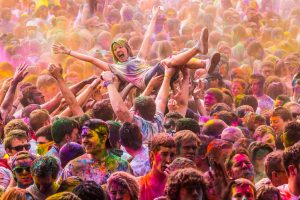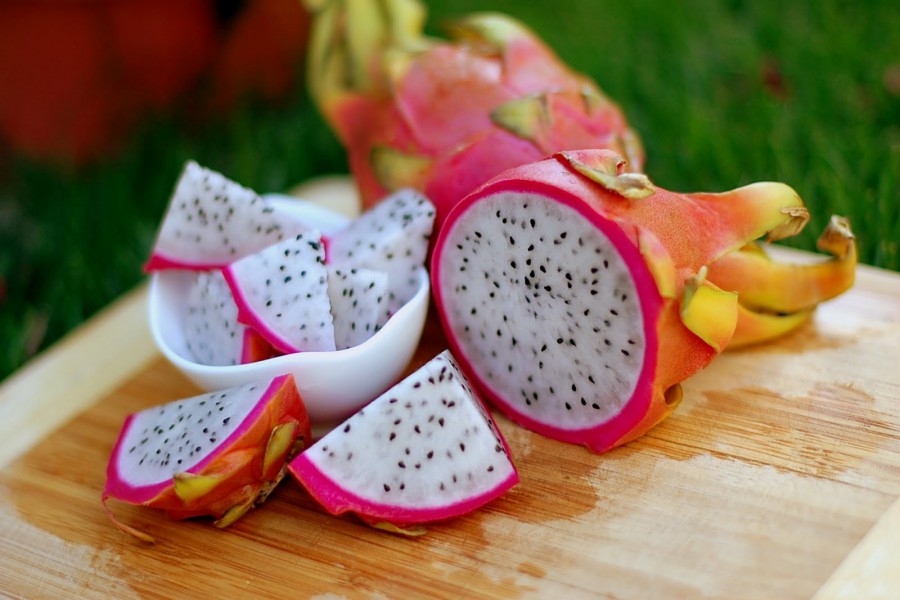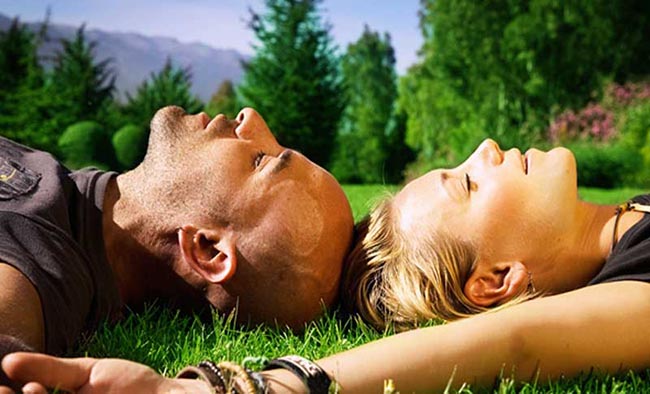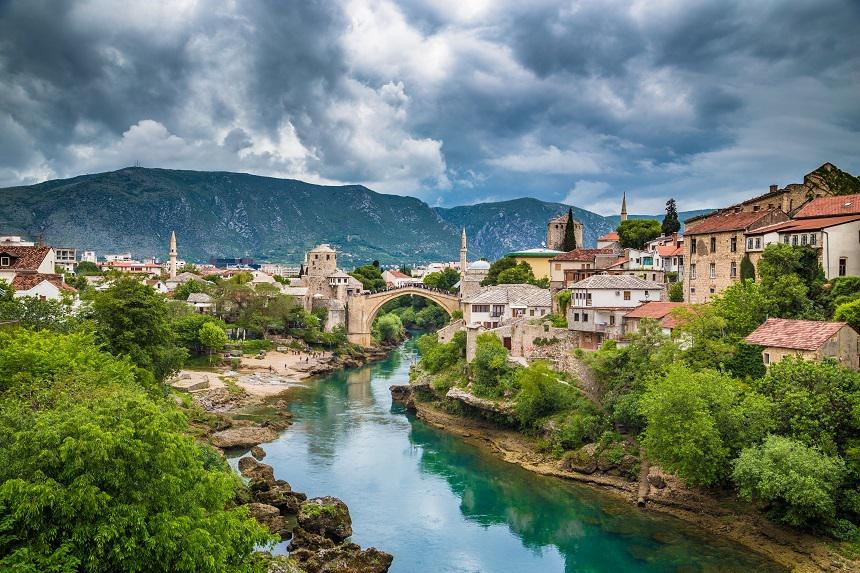Holi Festival of Colors, India
 Festival
Festival
Every spring in India, the Holi Festival is held – a celebration of the arrival of spring and new life.
The holiday usually takes place in late February – early March and lasts two days. Many tourists consider the Holi festival of colors one of the most striking and amazing events that a tourist in India can see.
And in some ways they are right – a huge number of the most varied powder paints, which are sprayed with everyone who turns out to be on the street during Holi, can really paint even the most gray everyday life in bright colors.
Festival of colors. More color!
But in addition to decorative functions, this colorful abundance also has a healing effect – herbal dye powders are quite useful and help strengthen immunity, Ayurvedic doctors say, and participation in the Holi ritual can protect against all spring diseases.
It is believed that the more you get dirty in the multi-colored color during the Holi festival, the more and more generous the gods will be to you this year, so these days on the streets of Indian cities you will not meet a single person in more or less clean clothes.
And here it doesn’t matter at all whether you wanted to take part in this noisy festival of colors or just passed by – those who celebrate will certainly generously share with you the wishes of good luck, health and blessings of the gods expressed during the Festival in the form of a handful of colorful colors.
Therefore, in the days of Holi’s celebration, you shouldn’t dress smartly when going outside – comfortable clothes that you will not be sorry to throw away later will be more appropriate, because how can you stay away when such an uncontrollable holiday of life reigns around?
Where did the Holi festival come from?
As for the history of the origin of the holiday, there are several legends associated with the Holi festival of colors. One of these legends tells about Kholik – a demoness from Indian mythology. Kholika, the sister of the evil king Hiranyakasipu, had a divine blessing that granted her invulnerability to fire. The demoness persuaded Vishnu Prahlada, the son of Asur Hiranyakasipu, faithful to God, to go up to the funeral pyre in honor of the deity, but a miracle happened and Holika burned, and the blessed Vishnu Prahlada came out of the fire unharmed.
Since then, this day is considered in Hinduism as the day of the arrival of spring, and the burning of a scarecrow by the evil Holiki is considered one of the rituals of celebrating the festival of colors. For the Slavs, the version of the origin of the festival of colors associated with the Holika, and the ritual of burning effigies are usually quite close, because it is very similar to the customs of the celebration of Shrovetide.
But the Holi festival is also associated with another episode – with the story of how the god Shiva incinerated the god of love Kama with his third eye for trying to break divine meditation. After that, Kama became incorporeal, but, listening to the requests of Parvati, the wife of Shiva, and the goddess Rati, the wife of Kama, Shiva nevertheless agreed to return his body to Kama. Since then, the Indian god of love Kama finds its physical shell for only 3 months a year, and it is at this time that spring comes in the world, everything blooms around, and people rejoice, celebrating a cheerful holiday of love.
Holi Celebration Features
And if the Indian festival of Diwali usually takes place in abundance of sweets at the festive table, then the Holi festival of colors has its own signature treat – tandai with the addition of bhang (hemp). And if everyone participates in the ritual sprinkling of paints – from old people to very young children, then treating with bhang is an obligatory religious ritual for the adult population.
Traditional milk drinks with added sugar, spices and marijuana juice or shredded leaves are called bhang-lassi. Such a drink is usually served on the day of Gaura Purnima – a holiday dedicated to the appearance of Gauranga, who founded the Sankirtan movement about 500 years ago – worship of the gods through the chanting of their holy names.
When does it pass? Holi festival in 2014 falls on March 17th.
Where does it go? Both in the tourist cities of India, and in non-tourist cities and settlements. In some places, foreigners are not sprinkled with paint on the streets, but in some places, for example, in Goa, tourists can begin to be targetedly doused with colored water and sprinkled with coloring powders.




